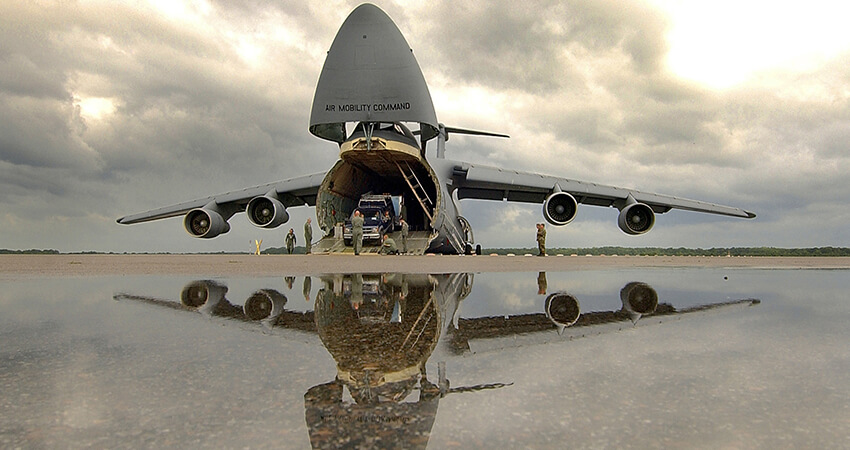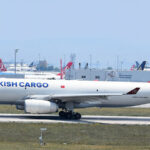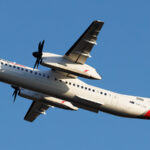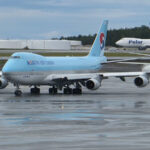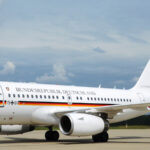In the world of cargo aviation, two giants stand out for their capacity and imposing presence: the Antonov An-124 and the Lockheed C-5 Galaxy. These airplanes, recognized for their size and transport capability, have played key roles in global logistics and cargo transport.
These giant cargo planes play a crucial role in transporting heavy cargo in an increasingly interconnected world. Their ability to carry large quantities of supplies, equipment, and materials to remote or difficult-to-reach locations has been crucial in logistical, humanitarian, and military operations worldwide.
The Antonov An-124: Giant of Air Transport
The Antonov An-124, developed by the Ukrainian company Antonov Design Bureau, is one of the largest and most capable aircraft in the world. Its robust design allows it to transport exceptionally heavy loads, with a capacity of up to 150 tons. This aviation colossus has been instrumental in transporting massive loads, from industrial machinery to military equipment, deployed in global humanitarian and logistical missions.
Launched in 1986 in the former Soviet Union, this aircraft has over 50 operational units worldwide. However, due to the war between Ukraine and Russia, its participation in air transport has decreased since February 2022.
The Lockheed C-5 Galaxy: the American colossus

The Lockheed C-5 Galaxy, primarily operated by the United States Air Force, is another titan in the world of cargo aviation. Although its cargo capacity is slightly less than that of the An-124, at just under 140 tons, its versatility and adaptability for various missions have made it a crucial resource for strategic and military cargo transport worldwide.
Also with four engines but introduced in 1970, this aircraft is only operated by the United States Air Force. In fact, the Antonov An-124 is a model designed to replicate the one created by the Americans.
It is worth noting that the same company created one of the most iconic cargo planes in the world, the Lockheed C-130 Hercules.
Although, in comparison, it can carry much less cargo, its versatility has also earned it much fame.
More capacity, more sustainability
Although both planes were not built with sustainability criteria, it is worth mentioning that both have a significant advantage in terms of consumption per kilogram transported. While other models may be more advanced in terms of efficiency, their enormous capacity gives them an advantage.
On the other hand, since these planes are used to transport very heavy products that could not be transported by other means or with other planes, their use in specific cases is also crucial.
A destroyed sibling
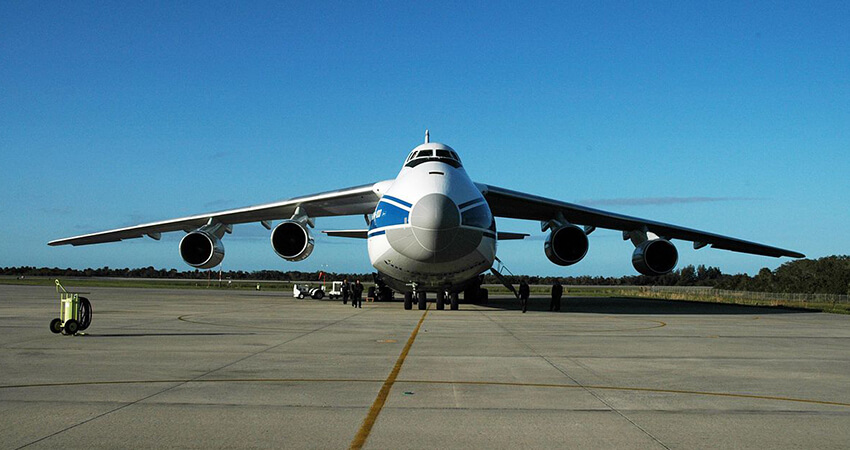
The Antonov An-225 was the successor to the Antonov An-124. Built in 1988, only one unit was ever manufactured. It was able to transport around 190 tons, and its size was the largest in the history of aviation. In fact, it holds several Guinness World Records.
This aircraft, with six engines, was used to transport heavy machinery or humanitarian aid. Its unique capacity placed it in a privileged position for some very specific but also extremely delicate operations.
However, in February 2022, its story came to an end. During the aforementioned conflict between Russia and Ukraine, the aircraft, which was stored at Hostomel airport near Kiev was destroyed.
The Ukrainian government could only show a few images of the remains of the aircraft.
Innovations and Future in Cargo Aviation
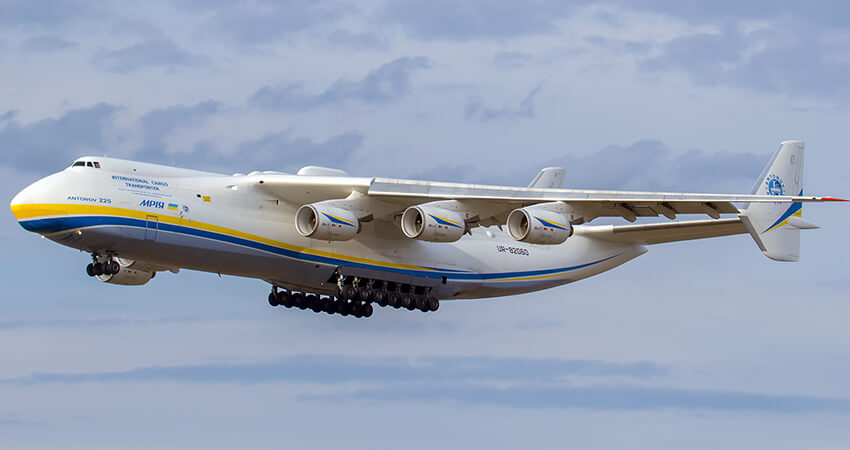
As the demand for cargo transport continues to grow, developments and improvements in cargo aviation are expected. From more fuel-efficient aircraft to innovative technologies to address logistical challenges, the future of these cargo giants promises to continue surprising.
In this context, in recent years, no aircraft as large as these have been built. This is because, except for very specific goods, generally, cargo transport requires slightly smaller capacities. This makes the use of slightly smaller aircraft, especially for commercial cargo, more viable.
The Antonov An-124 and the Lockheed C-5 Galaxy represent the pinnacle in terms of air cargo transport capacity. Their presence in cargo aviation is essential, contributing significantly to global mobility and logistics. As logistical and technological needs evolve, these giants will continue to play a vital role in the world of air cargo transport. However, it should be noted that their role is more strategic than everyday, as they are the key response to very specific challenges.
